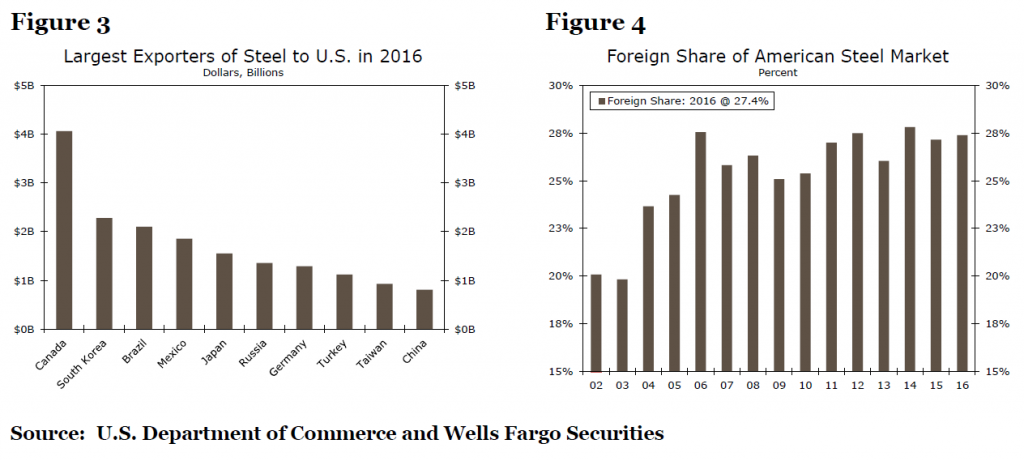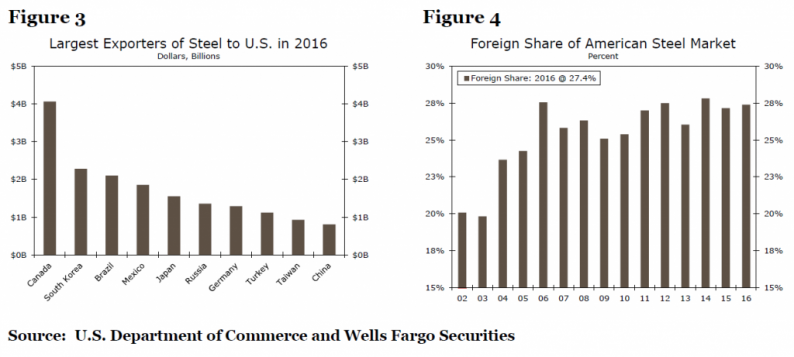On imported steel, that is
From Politico today:
STEEL REPORT COULD COME NEXT WEEK: Commerce Secretary Wilbur Ross is expected as early as next week to give President Donald Trump a menu of options for restricting steel imports, senators said after a closed-door meeting with the Cabinet official Thursday afternoon.
The avowed basis for these restrictions would be for national security (technically Section 232, described in this post). Apparently China is in the cross-hairs. This is interesting because imports of steel from China have decreased, and now rank behind countries like, for instance Russia.

Source: Wells Fargo.
Some people will say that it’s okay to raise taxes on foreigners. But anybody who has a grasp of elementary economics will recognize that the incidence depends on the size of the domestic market relative to the rest of the world. If the domestic market is small, then some of the incidence will fall on domestic consumers, broadly defined to include downstream steel-using firms.
Wells Fargo has documented the sectoral impact.
Direct and Indirect Price Effects of Tariffs
A tariff on foreign-produced steel, should the administration decide to levy one, would raise its price to American purchasers. If the tariff were confined to China only, its effect on the overall steel industry likely would not be that impactful given China’s small share at present of the overall American steel market.
However, a tariff levied on all foreign producers of steel would be more impactful. With roughly 30 percent of the market experiencing a tariff-induced price hike, American producers of steel could feel emboldened to raise prices as well.
So, which downstream industries would be most affected by higher steel prices, should they transpire? The detailed input-output tables for the U.S. economy show that the following notable industries have high degrees of exposure to steel inputs: fabricated metal products (#332), electrical equipment, appliances and components (#335), machinery (#333), transportation equipment (#336), and furniture and related products (#337). Prices charged by these industries could also rise and/or profit margins could be squeezed. ….














Leave A Comment